Dr. Andrew Sarpotdar describes the benefits of Spark Aligners — control and flexibility that lead to effective treatment.
Dr. Andrew Sarpotdar explains how Spark™ Clear Aligners provides a cutting-edge tool that puts control back into the hands of orthodontists
A little over a decade ago, I proudly defended my master’s thesis on clear aligner utilization in modern orthodontic practice to a room full of residents at Columbia University. It thus came as no surprise when, upon graduating, I immediately invited the local aligner representative to on-board the orthodontic team at my first job in group practice. I was stoked; aligners were the cutting edge of orthodontic treatment, and I was one of a handful of providers versed in using them. While case selection was limited, this modality opened up a whole new value proposition for patients averse to metal, and I, a freshly minted and hopelessly indebted young orthodontist, was the tip of the spear. After a brief presentation and a mediocre boxed lunch, I was dismayed to watch as my representative enrolled every referring dentist at my practice into their certification program, undermining my value and compromising a referral source I was desperately dependent on. Of course, back then, stories like this were becoming commonplace. There was only one viable option for aligner therapy, and orthodontists had to compromise beyond aloof representatives trying to cut us out of the picture. Competition drives innovation, and without it, aligners were little more than a costly novelty reserved for the simplest of cases or those willing to settle for “straight-ER.”
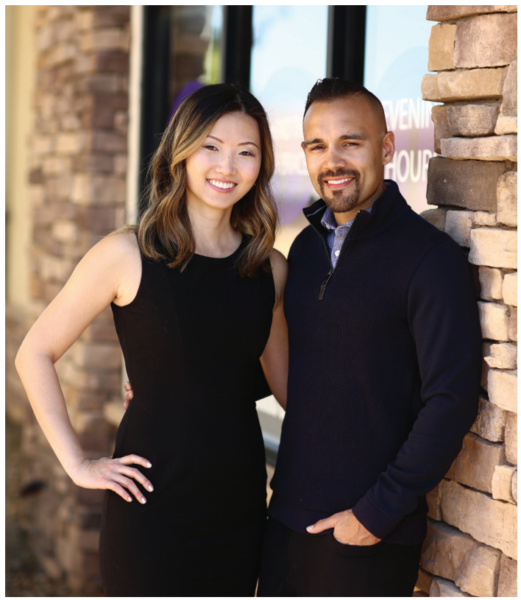
The choice is clear
Today, we are fortunate to have options for clear aligner therapy that have evolved far beyond the limitations of the past and provide orthodontists with the power and responsibility to choose wisely for their patients and practices. The best option will be one that is, first and foremost, effective. After trying several brands over the years, I have chosen Spark™ Clear Aligners, which gives the doctor all of the control and flexibility to make the treatment effective. In my opinion, predictable movement occurs first from the quality of the setup. While this is largely in the hands of the clinician, I have found the robust staging algorithm and superb communication within the Spark platform to make my life easier in this regard. The ability to integrate CBCT root imaging (with root collision alert feature) with setups is a recent development that also adds an exciting new dimension to my cases.
Furthermore, Spark offers enticing incentives with its educational tracks that will greatly improve your treatment planning with minimal investment. At the core of Spark’s effectiveness is its TruGEN™ aligner material. Aligners made from TruGEN have been shown to induce sustained force retention over a longer period than the leading aligner brand and have 19% greater contact with tooth surface area.1 For extra stubborn movements, try ordering the stiffer TruGEN XR™ for your refinements. After all, you wouldn’t treat your braces patients with only a NiTi wire, so why limit yourself to one type of plastic for every movement? Since using Spark, I have watched cases treated to near perfection that I wouldn’t have dreamed of treating with aligners when I first graduated.
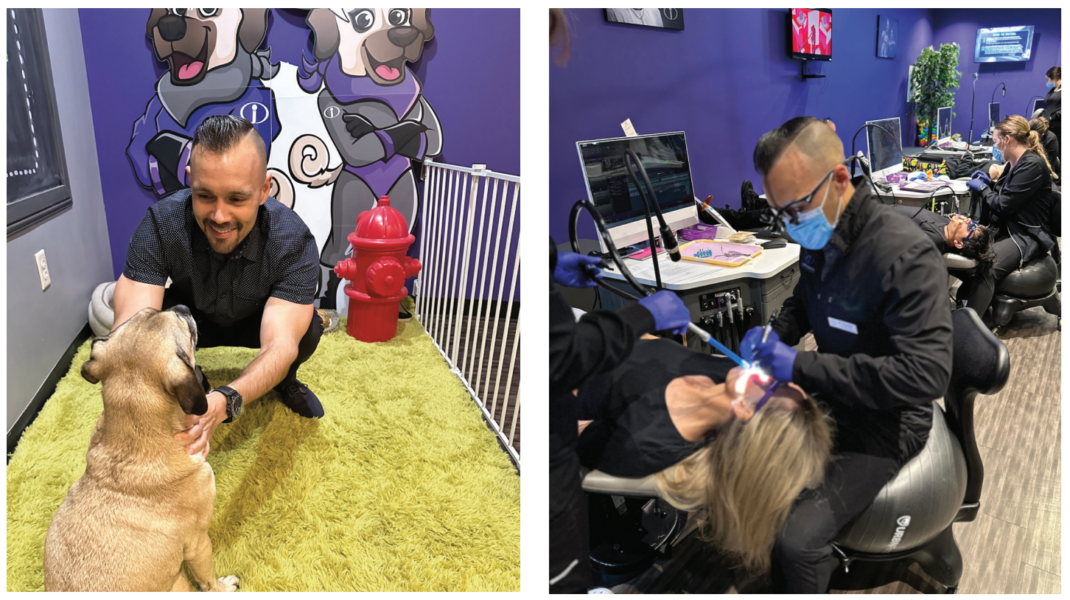
Treatment must be effective, but the real value of aligners over other modalities comes from their enhanced patient experience. This is one of my favorite and most obvious advantages of Spark Clear Aligners. Run your finger over the scalloped edges, and you’ll be impressed with the smoothness of the finish. Spark Aligners are polished and scalloped to minimize irregularity and discomfort. Ever get a “clear” aligner back from the lab only to have it look like a topographical map of the Rockies? I haven’t seen this in years, thanks to a manufacturing process that minimizes the appearance of striations and other imperfections, resulting in greater transparency that my patients appreciate. I always warn my patients that aligner clarity is a privilege, not a right. To maintain it, there are rules like brushing after meals and not eating or drinking anything with their aligners in. Experience has taught me that I’m either a bad motivator, or my patients salivate coffee because I was often horrified by the amber coloration previous aligners would develop (“spontaneously,” according to my patients). This staining has greatly diminished after switching to Spark since TruGEN is designed to retain this coloration less than other aligner materials.
Setting up for success
Success with your Spark treatment begins with setting your clinical preferences on your office portal, greatly increasing your submission and revision process efficiency.
For example, in most cases, I optimize for smile arc, keeping the laterals 0.5 mm above the centrals and the canines 0.5 mm above the laterals. I also include instructions to fully develop upper and lower arch forms simultaneously before initiating vertical incisor movements. Your preferences will be inherently subjective, but the point is to have them written beforehand to preclude typing them specifically for every case. Submitting cases should be delegated to clinical assistants to the extent possible.2 In my office, we use dry-erase diagnosis sheets that I can quickly fill out chairside and correspond to the submission portal. Once a setup is returned, it is advisable to use digital diagnostic features such as Bolton discrepancy, grid overlay, and tooth movement table to plan your final tooth position. Be sure to overengineer certain movements like incisor intrusion for a deep bite (I’ll often set the final overbite at 0 mm in these cases, like using a reverse Curve of Spee wire with braces). I hide attachments during this process to focus only on getting the optimal final tooth position. I will often resubmit the setup at this point before assessing the staging of the tooth movement. There are entire courses on staging, but the basic principle to remember is that aligners only push on teeth. This is especially important to consider with extrusive movements, for which an attachment is not a suitable replacement for good mechanics. Speaking of attachments, auxiliaries such as these are the final step in my case submissions only after I know where the teeth are moving and how they will get there. The algorithm will suggest attachments for you, but this is not a replacement for your clinical judgment and expertise.
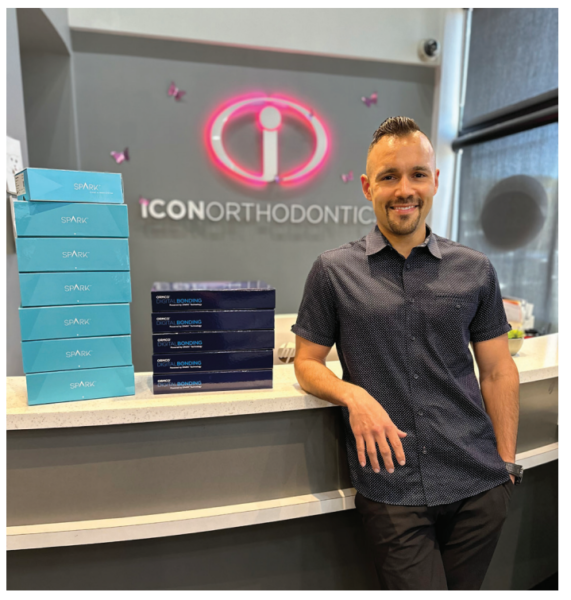
Depending on the case’s complexity, you may need one or more refinements for completion, so be mindful of this when selecting your product (I use Spark Advanced for most of my cases since there is no limit to number of aligners or refinements). When a patient returns for a refinement, my clinical team starts by taking new photos and radiographs if necessary. They floss all contacts and note any loose or open ones. I perform a clinical exam and dictate specific corrections that need to be made, and then we scan and resubmit the case. I will rarely remove attachments at this time as I will often use them in the following setup, or I can have them removed digitally should I choose to do so. We repeat this process until the case is complete, at which time we remove attachments and, now with Spark On-Demand, the doctor can order AOA retainers directly from the Spark Dtx portal. Our patients continue wearing their last tray at nighttime only until the retainers arrive, at which time they are happily dismissed!
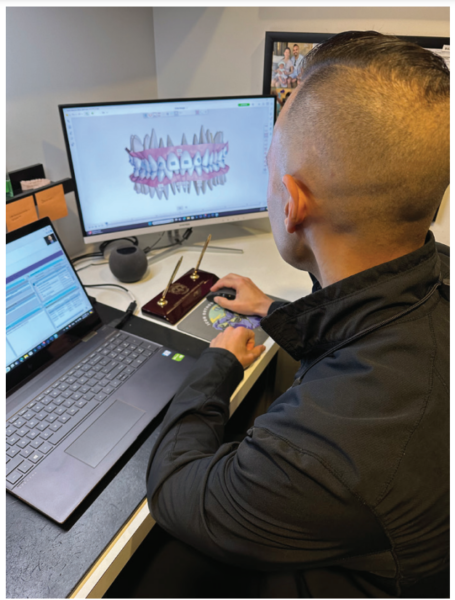
Case 1: Deep bite, severe crowding
A 40-year-old patient’s concern was crowded incisors following a relapse of treatment completed as a child. The clinical exam showed a constricted/omega-shaped maxillary arch with retroclined central incisors and moderate crowding of the mandibular incisors with a severe Curve of Spee and corresponding deep bite.
Deep bite cases are some of the more challenging ones to treat with clear aligners.
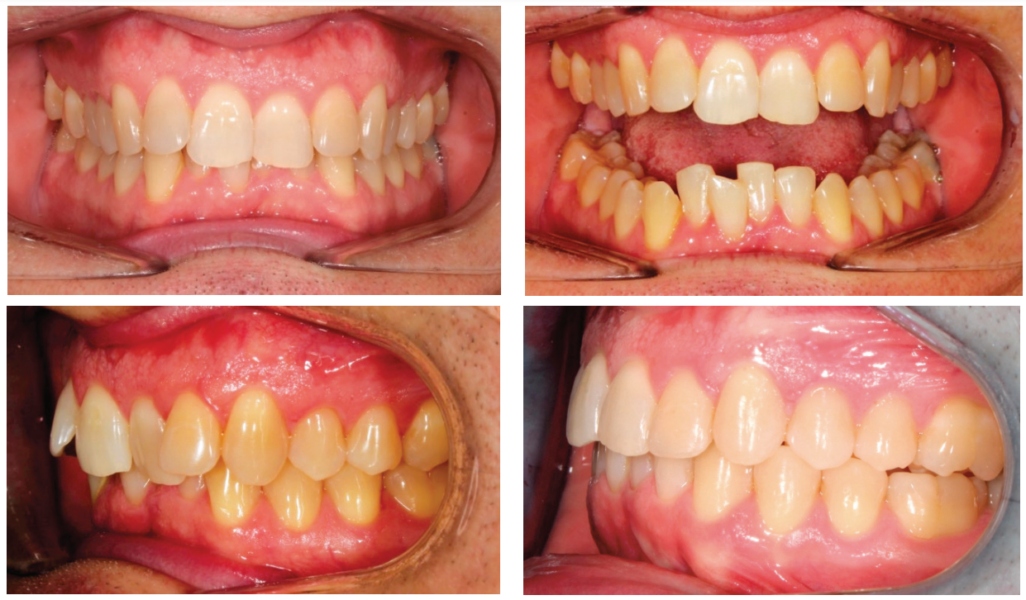
I began, as I always do, with the development/expansion of the maxillary arch and simultaneous uprighting of the mandibular posterior teeth. Expansion creates a reciprocal movement of retraction/retroclination for incisors, so it was necessary to counter this effect by inducing constricting force on the patient’s second molars during case setup (this is often favorable since second molar teeth tend to be overexpanded naturally due to minimal muscle tone buccal to this region). Constriction of second molars coincides with premolar expansion and proclination of both upper and lower incisors during the first phase of tooth movement, during which alignment is mostly achieved. This is followed by intrusion and retraction of the lower incisors with lingual root torque during the second phase.

The patient received 25 aligners initially and was able to wear them to completion with no tracking issues. At a pace of one aligner per week, the patient returned for a refinement at the 25-week mark with a near-perfect alignment but with minor loose contacts. I also felt he could benefit from additional arch development/expansion, so I programmed this into his following setup, which came to 13 stages. Unfortunately, due to a mix-up on our end, his case did not get submitted right away, meaning we would not get his aligners back in time for his appointment. To resolve this, we exported the first three upper and lower .stl files from his setup (a nice feature of the Spark system) and printed the models in-house so treatment wouldn’t be delayed. Once the remaining aligners were received from Spark, he picked them up from our front desk and proceeded with trays 4-13, after which his treatment was deemed complete. Total time was 15 months from scan to retainer.
Case 2: Deep bite, mild crowding, ectopic cuspid, posterior crossbite
The patient was a 27-year-old male whose main concerns were crowding and poor smile esthetics. The clinical exam also revealed he had a maxillary left second bicuspid in lingual crossbite, a deep overbite due to an excessive Curve of Spee, and an ectopic/under-erupted maxillary left cuspid.
Like the previous case, we started the patient’s treatment with simultaneous premolar expansion, second molar constriction, and proclination of incisors, followed by retrusion and retraction of lower incisors to the final position. One additional challenge was the UL5 crossbite; however, this was treated out quite predictably, with some compensatory buccal root torque during expansion. This was greatly aided by the distal anchorage of the UL6 and UL7, which made this a predictable movement. The real challenge in this case was the ectopic UL3. My initial setup failed to stage this tooth’s extrusion properly and relied too heavily on a gingivally beveled attachment for anchorage.
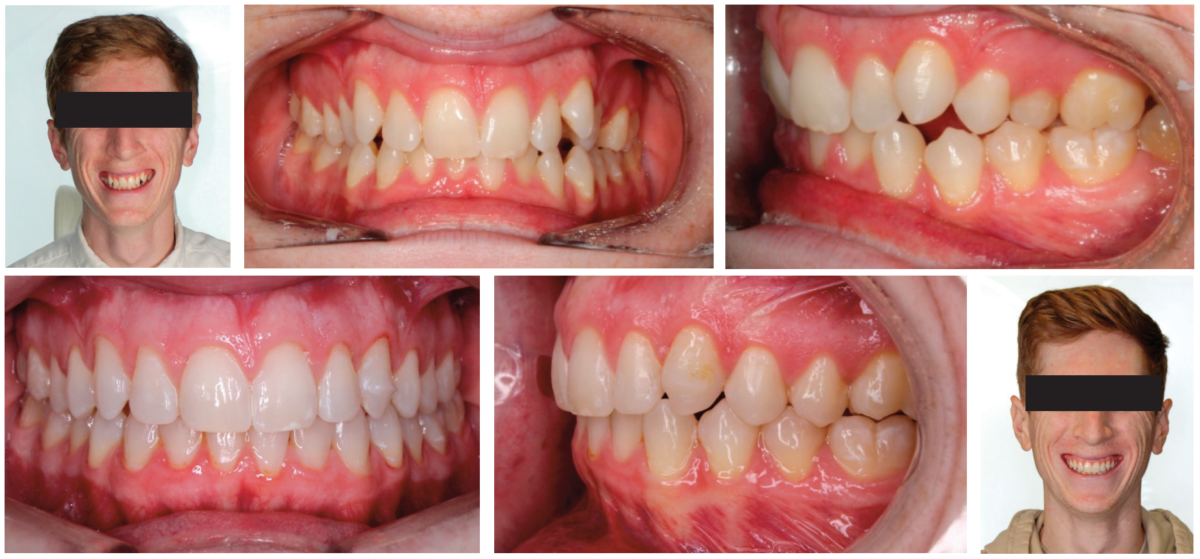
The attachment was rotated at 45 degrees from the occlusal plane to attempt simultaneous mesial in rotation and extrusion; however, only the former movement was successful. During my second refinement, 29 weeks after initial delivery, I programmed visible space mesial and distal to this tooth, then staged it to procline with buccal movement while maintaining its current vertical position. This was followed by simultaneous retraction, retroclination, and extrusion, which proved far more successful but didn’t get me to my final position. In this case, a third refinement was necessary, repeating the same protocol and obtaining an excellent outcome. The total time in treatment was 21 months.
In conclusion
Now is an exciting time to delve into the world of digital orthodontics. As competition increases in the clear aligner market, so do our options and the efficacy of those options. I encourage you to hone your skills, evaluate the choices, and find the ones that will work the best for your practice and your patients. The path to a bright future has never been clearer.
** The opinions expressed are those of Dr. Sarpotdar as a paid consultant to Ormco. Ormco is a medical device manufacturer and does not dispense medical advice. Clinicians should use their own professional judgment in treating their patients. Individual patient results may vary.
Read about some important updates to Spark Aligners here: https://orthopracticeus.com/important-updates-on-spark-aligners-and-ultima-hooks/
- Data on file with Ormco Corporation.
- The regulations regarding delegation of tasks vary by local jurisdiction. Please follow your local regulations when delegating tasks.
Stay Relevant With Orthodontic Practice US
Join our email list for CE courses and webinars, articles and mores


